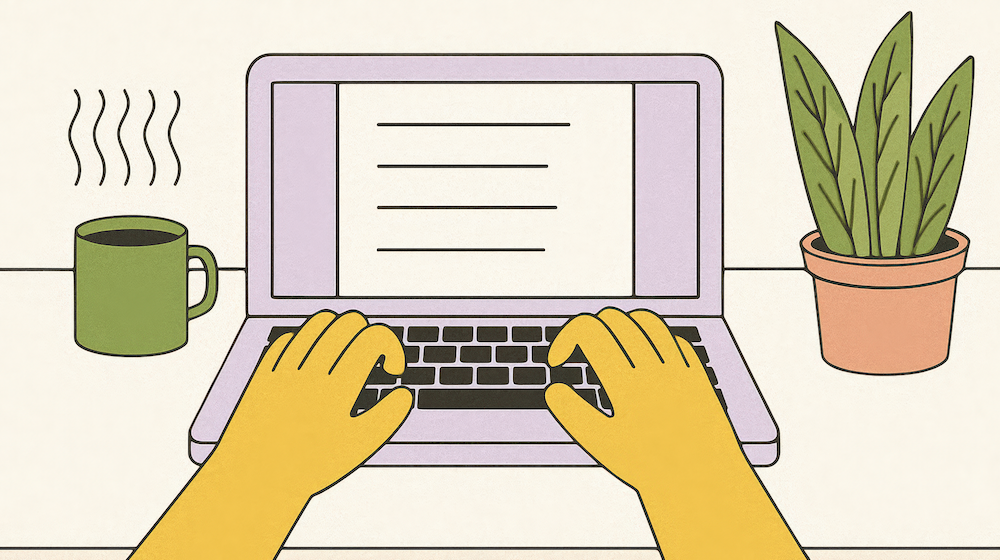The truth about resumes in design hiring
Tailoring your resume can feel tedious when juggling applications, updating your portfolio, or preparing for interviews. But it pays off to avoid skipping this step.
Here’s why tailoring your resume pays off—and why it’s essential if you want to stand out.
Read more about writing an ATS-friendly resume.

1. Applicant tracking systems (ATS) filter out generic resumes
Before a human sees your resume, it’s likely scanned by an Applicant Tracking System (ATS). These systems look for keywords and phrases pulled from the job description. Your resume gets ranked lower or filtered out completely if they don't find a match.
That means your resume needs to reflect:
- Tools (e.g., Figma, Framer, Webflow)
- Processes and methods (e.g., wireframing, prototyping, user research)
- Titles or roles (e.g., UX designer, product designer, UI/UX specialist)
You’re already a strong designer—now make sure your resume speaks the same language as the job post, so your strengths come through clearly!
2. Recruiters don’t read, they scan
If you do pass the ATS, the next hurdle is speed. Most recruiters spend less than 10 seconds on an initial scan.
They’re looking for signs of relevance at a glance:
- Do you mention the exact tools or methods the role asks for?
- Are your key UX skills and results easy to spot?
- Do your projects show measurable impact?
3. Tailoring signals effort—and fit
When you tailor your resume, you increase your odds of being seen. You also show that you understand the role and are a thoughtful, relevant match.
A tailored resume answers the implicit question:
Why you, for this role, right now?
It uses the company’s own language, mirrors its priorities, and makes it easy for a hiring team to imagine you on their product team.
Why tailoring feels hard (especially for designers)
Tailoring your resume is one of the smartest things you can do, and with everything else on your plate, it’s completely understandable if it hasn’t been your focus yet.
Because it takes time, time you often don’t have.
- You have to analyze each job description
- Identify the tools and skills they care about
- Adjust your resume to reflect those priorities
- And repeat the process for every single application
When you’re deep in job applications or focused on finding the right role, tailoring your resume can feel like another task. But it makes all the difference, because your portfolio can only make an impact if your resume gets you through the door.

Where GPT makes resume tailoring easier
GPT helps you showcase your experience more clearly and efficiently, so your strengths come through faster and more effectively.
It helps you identify the right terms from each job post, highlight the aspects of your experience that match the role’s focus, and quickly build tailored versions of your resume without starting from scratch.
Need a strong starting point? Resume Now offers simple, professional templates that make it easy to create a clean, well-structured resume. This allows you to focus your energy on tailoring the content with GPT.
You stay in control. GPT helps you move faster and align more closely with what hiring teams are scanning for.
Here’s what GPT helps you do:
- Speeds up tailoring by surfacing the keywords and priorities in each job
- Refines your language to highlight real skills and outcomes
- Makes your resume easier to scan—both for ATS and recruiters
Key principle: Use GPT for clarity, not fiction. It’s about precision, not exaggeration.

How to use GPT to tailor your resume
1. Be specific
Generic input = generic output. GPT works best when you give it real details.
- Less effective: “Worked on a mobile app.”
- More effective: “Designed and prototyped a mobile app using Figma, improving task completion time by 20%.”
2. Focus on outcomes
Don’t just list tasks—show the difference your work made.
- Instead of: “Conducted user research.”
- Try: “Led user research that uncovered usability issues, informing the product redesign.”
3. Keep it honest
GPT can help you refine how you present your experience, but the substance should always stay true. The goal is to highlight your work clearly and authentically in a way that aligns with the role’s requirements.
What GPT does best
- Match your resume to each role: Align your skills and tools with what the job description emphasizes.
- Improve structure and clarity: Make your projects and results easier to scan and understand.
- Speed up the process: Create tailored versions of your resume faster, without rewriting every line.
15 prompts to tailor your resume faster
These 15 GPT prompts are organized to help you fast at every stage of tailoring your resume. You’ll learn how to extract key terms from job posts, refine your content for clarity and impact, adapt your resume for different roles or industries, and optimize it for readability. Whether you’re applying to UX, product design, or any other role, these prompts will help you create a sharper, more relevant resume without starting from scratch each time.


